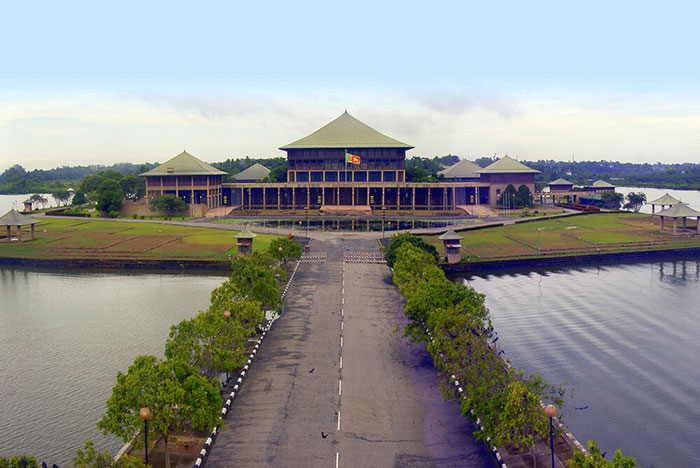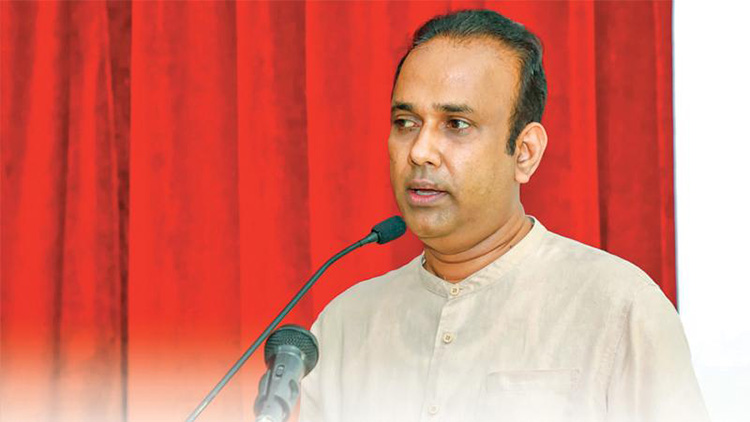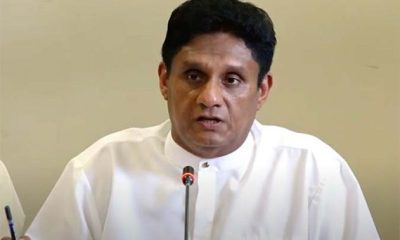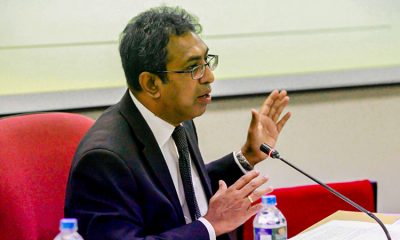Features
A departure from the 1995 Age of Consent Legislation

Examining Sri Lanka’s New ‘Romeo and Juliet Law’:
By Prof. M.W. Amarasiri de Silva
According to an article published in The Island newspaper on March 25, 2024, Dr. Sudarshini Fernandopulle, MP, has raised concerns about the lack of consultation with the Women Parliamentarians’ Caucus before the Justice Ministry gazetted a bill on February 9, 2024. This bill aimed to amend Chapter 19 of the Penal Code, proposing a reduction in the age of consent for sexual intercourse to 14 years. Dr. Fernandopulle emphasised that this provision directly relates to the human rights of children, with a specific focus on girls. She highlighted the profound impact such legislation could have on their lives, including implications for health and individual identity. Therefore, she stressed the importance of a cautious and sensitive approach to safeguard children’s rights and well-being.
In light of this discussion, I wish to present the findings of a study I conducted for UNICEF in 2009, demonstrating how increasing the age of marriage to 16 years has significantly reduced instances of underage sexual activities such as rape and non-consensual sex. This research underscores the critical need for comprehensive measures to protect children, particularly in matters as crucial as the age of consent.
The General Marriage Ordinance of 1907 and the Kandyan Marriage and Divorce Act of 1952 permitted child marriages. Notably, most marriages in Sri Lanka were registered, including those of children before 1995. In 1995, significant amendments were made to both these laws, effectively removing the legal sanction for marriages under 18. The legal age of marriage was raised to 18 years. Notably, the law was interpreted to disallow parental consent for marriages of children under 18 years, establishing an absolute prohibition. These legal changes also impacted the Penal Code, raising the age of sexual consent from 12 to 16 years. This adjustment in the Penal Code has direct implications for the law on rape.
The concept of “statutory rape” in criminal law, which pertains to sexual intercourse with a minor below the age of 16, became legally recognized. It’s worth noting that these legal reforms did not affect the Muslim community, as their marriage system operates under the jurisdiction of Muslim law. While the Muslim Law Research Committee proposed raising the age of marriage within the Muslim community, this recommendation has yet to be implemented. However, within the Muslim community, the existing criminal law prohibits sexual intercourse with a child wife under 12 years of age. This provision is interpreted as a form of statutory marital rape, illustrating the complexities within the legal framework concerning marriage and sexual consent across different communities in Sri Lanka.
Early Child Marriages
Early (child) marriages, defined as those occurring before the age of 18, and instances of statutory rape involving individuals under 16 years of age, disproportionately affect young girls. When a case of child marriage is reported, the male partner often faces legal consequences. In many instances, he is sentenced to rigorous imprisonment, ranging from a minimum of 10 years to a maximum of 20 years.
Court decisions frequently direct the girls involved in such marriages to correctional institutes like the Girl’s Home in Ranmuthugala. They undergo a reform and rehabilitation program typically lasting three years or less. After completing the program, they are returned home under the supervision of the Probation Officer from the respective Probation Division. This process aims to support and guide the girls as they reintegrate into society after their challenging experiences.
In cases of statutory rape, the girl in question undergoes examination by the respective Judicial Medical Officer (JMO), who then initiates a correctional program tailored to the girl’s needs. Additionally, the JMO provides crucial evidence for legal action against the perpetrators. According to the Penal Code, any instance of vaginal intercourse with a girl under 16 years old, regardless of whether it occurred within the context of a consensual marriage, romantic relationship, or otherwise, constitutes rape. Perpetrators are thereby subject to prosecution and may face rigorous imprisonment, with a minimum sentence of ten years and a maximum of 20 years.
A 2009 study revealed a significant decrease in registered marriages involving individuals under 18 years old in Sri Lanka between 1994 and 2003. This decline has been particularly pronounced following the amendment of marriage laws in 1995, which raised the legal age of marriage to 18 years. The data indicates a substantial drop from approximately 6,000 male and female individuals marrying before turning 18 in 1996 to only around 1,000 in 2003. This decline can be attributed to the legislative changes implemented in 1995 and is evident across all ethnic groups except the Muslim community.
Concerning Trend
The evidence presented in this report indicates a concerning upward trend in the incidence of early marriages and statutory rape. There are indications that these practices are on the rise, particularly in less developed districts and Divisional Secretariat divisions, areas affected by conflict, specific ethnic communities, the estate sector, and impoverished regions. Data from various agencies, including safe houses and Certified Schools for female children, suggests that the percentage of girls entering these institutions who have experienced statutory rape and consensual marriages is increasing. It’s crucial for lawmakers to consider the full spectrum of implications when drafting new legislation, especially when it concerns sensitive issues like the age of consent.
While reducing court cases of underage sex and rape may be an intended outcome of such a law, it’s equally important to weigh the potential social, psychological, and physiological consequences.
Here are some key considerations that lawmakers should take into account:
1. Social Implications: Lowering the age of consent may shift societal norms and attitudes toward sexual behaviour among adolescents. This could lead to changes in how young people perceive relationships, intimacy, and consent, potentially influencing their behaviour in ways that may not align with their emotional or cognitive maturity.
2. Psychological Implications: Adolescents may face increased pressure to engage in sexual activities before they are emotionally or mentally ready, leading to negative psychological consequences such as trauma, regret, or confusion. Additionally, lowering the age of consent may blur boundaries between age groups, potentially exposing younger individuals to situations they are ill-prepared to handle.
3. Physiological Implications: Adolescents undergo significant physical and hormonal changes during puberty, but these changes do not necessarily correspond to the development of emotional or cognitive maturity. Lowering the age of consent without considering these differences could increase the risk of exploitation or harm to individuals who are not fully equipped to make informed decisions about their sexual health.
4. Legal Safeguards: While reducing court cases related to underage sex and rape is a valid concern, it’s important to ensure that legal safeguards are in place to protect individuals from coercion, manipulation, or abuse. This includes robust education on consent, comprehensive sex education programs, and adequate support systems for victims of sexual violence.
UN Convention
Overall, any proposed changes to the age of consent should be accompanied by thorough research, consultation with experts in fields such as psychology, sociology, and public health, and a comprehensive understanding of the potential consequences for individuals and society as a whole. Balancing legal objectives with ethical considerations is essential in crafting legislation that promotes the well-being and safety of all individuals, particularly vulnerable populations such as adolescents.
The United Nations Convention on the Rights of the Child defines a child as any individual below the age of 18 years. Consequently, any form of sexual activity involving those under 18 years old can logically be categorized as child abuse or rape. The legal age of consent for engaging in sexual intercourse varies from one country to another. In the United States, it ranges from 16 to 18 years of age, with California setting it at 18 years.
In India, the age of consent is established at 18 years according to the Protection of Children from Sexual Offences (POCSO) Act. Before the enactment of the POCSO Act in 2012, there was no distinct age of consent defined for males, and it was determined by Section 375 of the Indian Penal Code, which outlines the definition of “rape.” The Law Commission of India advised against altering the age of consent from 18 years, noting that this age has fluctuated significantly in Indian legal history.
Initially set at ten years in 1860, it was raised to 16 years for females until 2012. The decision to increase the age of consent for females in India was informed by tragic events such as the Phulmoni case. In 1860, the age of consent for females was a mere ten years. However, following public outrage sparked by the Phulmoni case in 1891, where an 11-year-old girl died due to injuries sustained during forced sexual intercourse by her husband, the age of consent for women was raised to 12 years under Section 375. Despite the severity of the crime, the husband was convicted only of causing grievous hurt by a rash or negligent act endangering life, and he received a sentence of one year’s rigorous imprisonment. Thereafter, the age of consent was raised to 14 years in 1925 and to 16 years in 1940.
Enactment of POCSO
Before the enactment of the Protection of Children from Sexual Offences (POCSO) Act in 2012, the age of consent for females in India stood at 16 years, while there was no specific age of consent defined for males. Over time, amendments to the marital rape exception outlined in Section 375 of the law have occurred. This exception has evolved from setting the age at ten years in 1860 to 15 years by 2012.
Sri Lanka is considering lowering the age of consent for sexual intercourse to 14 years. This proposed statutory change raises concerns about potential significant negative consequences. While there has been some debate on the matter, it is widely acknowledged that establishing a minimum age limit for sexual consent is crucial. It is essential to recognize that children under the age of 14 lack both the cognitive development and emotional maturity necessary to make informed decisions about their sexual behaviour.
Lowering the legal age of sexual consent would result in the decriminalisation of a significant number of underage individuals engaging in sexual intercourse. The arguments against such a legal amendment are summarized and demonstrated to lack validity. This proposal is not merely contrary to popular opinion but is widely viewed as absurd. In 2013, when Professor John Ashton, then President of the Faculty of Public Health, Royal Colleges of Physicians, Liverpool, England, suggested reducing the age of consent from 16 years to 15 or 14 years, the proposal was promptly rejected by representatives from both the government and the opposition. Even Prime Minister David Cameron referred to the suggestion as “offensive.”
There are numerous compelling arguments against such a change. This proposal could have far-reaching implications for other areas where the rights of young people are unfairly restricted. Across all jurisdictions in the UK, the existing laws dictate that the age of consent for any form of sexual activity is 16 years for both males and females, regardless of their sexual orientation or the gender of their partner(s).
In the United States, engaging in sexual activity with a person under the age of 16 is considered an offense. However, Home Office guidance in the USA clarifies that there is no intention to prosecute teenagers under 16 if both parties consent and are of similar ages. Additionally, it is unlawful for an individual aged 18 or older to engage in sexual activity with a person under 18 if the older person holds a position of trust, such as a teacher or social worker, as such conduct constitutes an abuse of trust. There is no evidence to suggest that the legal minimum age of sexual consent in a country correlates with the sexual behavior of young people.
A change in the law is often argued to potentially lead to an increase in younger children engaging in inappropriate sexual activity. However, there is a notable lack of evidence supporting this claim. Much of the available evidence suggests that the current legal framework has minimal impact on the sexual behavior of young individuals. For instance, data collected between 2010 and 2012 indicates that 31% of British males and 29% of British females had experienced full sexual intercourse before reaching the age of 16. Comparatively, fifty years earlier, only 15% of males and 4% of females reported engaging in sexual intercourse before this age. Remarkably, there had been no alteration in the law concerning heterosexual intercourse during this time period. Furthermore, a study examining the reasons for sexual abstinence among American school students found that the law was not commonly cited as a factor influencing their decision to abstain from sexual activity.
Young people aged 14 years typically lack the cognitive maturity necessary to assess the risks associated with engaging in sexual activity. There is substantial evidence suggesting that 14-year-olds does not possess the cognitive capacity to evaluate risks and benefits, comparable to individuals aged 21. Furthermore, concerns regarding emotional maturity are often raised, supported by neuroscientific findings indicating significant changes in the adolescent brain throughout the teenage years and beyond. Research highlights the differential development of subcortical limbic systems relative to top-down control systems during adolescence, suggesting that teenagers may not be physiologically equipped to make decisions regarding risk-taking.
Despite these findings, relying solely on indirect evidence may be imprudent, especially when more directly relevant studies indicate that the inexperience of youth rather than biological limitations contributes to their vulnerability in risky situations.
The prevalence of sexually transmitted infections and teenage pregnancies among 15–17-year-olds remains substantial. Additionally, many young people, particularly girls, report distressing sexual experiences, with a significant number regretting their first sexual encounter. Most important is to facilitate the provision of appropriate sex education to children and adolescents, enabling them to make informed decisions. Furthermore, it would ease the delivery of sexual health services to this age group, alleviating concerns about inadvertently supporting illegal activity.
It will not escape the notice of the discerning reader that the principles and evidence presented here extend beyond the realm of sexual consent to various other areas where the legal standing of minors is debatable. Sri Lanka needs research into adolescent sexuality before setting up age of consent for sexual inter course. We do not know what percentage of children under 14 and 16 years of age are involved in sexual activity. What percentage of teenagers get pregnant, and subject to rape and sexual misconduct. A study conducted on early marriage in the Batticaloa District shows that the amendments to the marriage law in 1995 that increased the age of marriage to 18 years has actually reduced the incidence of registered marriages in all categories of persons, except the Muslims who were not covered under the new law. It has actually reduced the incidence of teenage pregnancies and rapes.
Due to lack of data, which is a result of poor data collection procedures and
coordination among service providers in Sri Lanka it is hard to comment on the prevalence or patterns of early marriages, statutory rape or teenage sexual activity. The 2009 study based on data available with safe houses and certified schools finds that statutory rape is increasing in the country, particularly in the rural sectors and less developed districts, despite the increase of age of consent to 16 years in 1995 amendments to the law.
There is a significant shortage of data regarding the prevalence and patterns of early marriages and statutory rape in Sri Lanka. Specifically, there is a lack of information concerning the demographics involved, such as ethnicity, age, geographical distribution, and socioeconomic status of families. Furthermore, there is a notable absence of research on the psychological and health impacts, as well as the effects on education and human rights, associated with early marriage and rape.
Moreover, there is a notable absence of studies or data shedding light on the factors contributing to the high rates of early marriages and rape in communities experiencing significant stress, residing in impoverished areas, or belonging to specific ethnic enclaves. At the national level, marriage data are not categorized to distinguish early marriages involving individuals under 18.
Despite the prevalence of issues such as teenage pregnancies, suicides among young individuals, and early onset of menstruation in these populations, there has been insufficient investigation into the interconnections between these issues in the context of Sri Lanka.
In summary, the complexities of setting the age of sexual consent highlight larger questions regarding the rights and obligations of minors within society. Through a commitment to evidence-based strategies and an understanding of adolescent development, policymakers can work towards establishing a legal structure that prioritizes the well-being and rights of young people. It’s important to emphasize that decisions regarding the age of consent should not be solely influenced by the frequency of court cases involving teenage sexual behavior, nor should they be swayed by political expediency. Any alterations to this law should be grounded in careful consideration of its societal implications and the protection of vulnerable individuals, rather than serving as a tool for political maneuvering.
Features
The heart-friendly health minister

by Dr Gotabhya Ranasinghe
Senior Consultant Cardiologist
National Hospital Sri Lanka
When we sought a meeting with Hon Dr. Ramesh Pathirana, Minister of Health, he graciously cleared his busy schedule to accommodate us. Renowned for his attentive listening and deep understanding, Minister Pathirana is dedicated to advancing the health sector. His openness and transparency exemplify the qualities of an exemplary politician and minister.
Dr. Palitha Mahipala, the current Health Secretary, demonstrates both commendable enthusiasm and unwavering support. This combination of attributes makes him a highly compatible colleague for the esteemed Minister of Health.
Our discussion centered on a project that has been in the works for the past 30 years, one that no other minister had managed to advance.
Minister Pathirana, however, recognized the project’s significance and its potential to revolutionize care for heart patients.
The project involves the construction of a state-of-the-art facility at the premises of the National Hospital Colombo. The project’s location within the premises of the National Hospital underscores its importance and relevance to the healthcare infrastructure of the nation.
This facility will include a cardiology building and a tertiary care center, equipped with the latest technology to handle and treat all types of heart-related conditions and surgeries.
Securing funding was a major milestone for this initiative. Minister Pathirana successfully obtained approval for a $40 billion loan from the Asian Development Bank. With the funding in place, the foundation stone is scheduled to be laid in September this year, and construction will begin in January 2025.
This project guarantees a consistent and uninterrupted supply of stents and related medications for heart patients. As a result, patients will have timely access to essential medical supplies during their treatment and recovery. By securing these critical resources, the project aims to enhance patient outcomes, minimize treatment delays, and maintain the highest standards of cardiac care.
Upon its fruition, this monumental building will serve as a beacon of hope and healing, symbolizing the unwavering dedication to improving patient outcomes and fostering a healthier society.We anticipate a future marked by significant progress and positive outcomes in Sri Lanka’s cardiovascular treatment landscape within the foreseeable timeframe.
Features
A LOVING TRIBUTE TO JESUIT FR. ALOYSIUS PIERIS ON HIS 90th BIRTHDAY

by Fr. Emmanuel Fernando, OMI
Jesuit Fr. Aloysius Pieris (affectionately called Fr. Aloy) celebrated his 90th birthday on April 9, 2024 and I, as the editor of our Oblate Journal, THE MISSIONARY OBLATE had gone to press by that time. Immediately I decided to publish an article, appreciating the untiring selfless services he continues to offer for inter-Faith dialogue, the renewal of the Catholic Church, his concern for the poor and the suffering Sri Lankan masses and to me, the present writer.
It was in 1988, when I was appointed Director of the Oblate Scholastics at Ampitiya by the then Oblate Provincial Fr. Anselm Silva, that I came to know Fr. Aloy more closely. Knowing well his expertise in matters spiritual, theological, Indological and pastoral, and with the collaborative spirit of my companion-formators, our Oblate Scholastics were sent to Tulana, the Research and Encounter Centre, Kelaniya, of which he is the Founder-Director, for ‘exposure-programmes’ on matters spiritual, biblical, theological and pastoral. Some of these dimensions according to my view and that of my companion-formators, were not available at the National Seminary, Ampitiya.
Ever since that time, our Oblate formators/ accompaniers at the Oblate Scholasticate, Ampitiya , have continued to send our Oblate Scholastics to Tulana Centre for deepening their insights and convictions regarding matters needed to serve the people in today’s context. Fr. Aloy also had tried very enthusiastically with the Oblate team headed by Frs. Oswald Firth and Clement Waidyasekara to begin a Theologate, directed by the Religious Congregations in Sri Lanka, for the contextual formation/ accompaniment of their members. It should very well be a desired goal of the Leaders / Provincials of the Religious Congregations.
Besides being a formator/accompanier at the Oblate Scholasticate, I was entrusted also with the task of editing and publishing our Oblate journal, ‘The Missionary Oblate’. To maintain the quality of the journal I continue to depend on Fr. Aloy for his thought-provoking and stimulating articles on Biblical Spirituality, Biblical Theology and Ecclesiology. I am very grateful to him for his generous assistance. Of late, his writings on renewal of the Church, initiated by Pope St. John XX111 and continued by Pope Francis through the Synodal path, published in our Oblate journal, enable our readers to focus their attention also on the needed renewal in the Catholic Church in Sri Lanka. Fr. Aloy appreciated very much the Synodal path adopted by the Jesuit Pope Francis for the renewal of the Church, rooted very much on prayerful discernment. In my Religious and presbyteral life, Fr.Aloy continues to be my spiritual animator / guide and ongoing formator / acccompanier.
Fr. Aloysius Pieris, BA Hons (Lond), LPh (SHC, India), STL (PFT, Naples), PhD (SLU/VC), ThD (Tilburg), D.Ltt (KU), has been one of the eminent Asian theologians well recognized internationally and one who has lectured and held visiting chairs in many universities both in the West and in the East. Many members of Religious Congregations from Asian countries have benefited from his lectures and guidance in the East Asian Pastoral Institute (EAPI) in Manila, Philippines. He had been a Theologian consulted by the Federation of Asian Bishops’ Conferences for many years. During his professorship at the Gregorian University in Rome, he was called to be a member of a special group of advisers on other religions consulted by Pope Paul VI.
Fr. Aloy is the author of more than 30 books and well over 500 Research Papers. Some of his books and articles have been translated and published in several countries. Among those books, one can find the following: 1) The Genesis of an Asian Theology of Liberation (An Autobiographical Excursus on the Art of Theologising in Asia, 2) An Asian Theology of Liberation, 3) Providential Timeliness of Vatican 11 (a long-overdue halt to a scandalous millennium, 4) Give Vatican 11 a chance, 5) Leadership in the Church, 6) Relishing our faith in working for justice (Themes for study and discussion), 7) A Message meant mainly, not exclusively for Jesuits (Background information necessary for helping Francis renew the Church), 8) Lent in Lanka (Reflections and Resolutions, 9) Love meets wisdom (A Christian Experience of Buddhism, 10) Fire and Water 11) God’s Reign for God’s poor, 12) Our Unhiddden Agenda (How we Jesuits work, pray and form our men). He is also the Editor of two journals, Vagdevi, Journal of Religious Reflection and Dialogue, New Series.
Fr. Aloy has a BA in Pali and Sanskrit from the University of London and a Ph.D in Buddhist Philosophy from the University of Sri Lankan, Vidyodaya Campus. On Nov. 23, 2019, he was awarded the prestigious honorary Doctorate of Literature (D.Litt) by the Chancellor of the University of Kelaniya, the Most Venerable Welamitiyawe Dharmakirthi Sri Kusala Dhamma Thera.
Fr. Aloy continues to be a promoter of Gospel values and virtues. Justice as a constitutive dimension of love and social concern for the downtrodden masses are very much noted in his life and work. He had very much appreciated the commitment of the late Fr. Joseph (Joe) Fernando, the National Director of the Social and Economic Centre (SEDEC) for the poor.
In Sri Lanka, a few religious Congregations – the Good Shepherd Sisters, the Christian Brothers, the Marist Brothers and the Oblates – have invited him to animate their members especially during their Provincial Congresses, Chapters and International Conferences. The mainline Christian Churches also have sought his advice and followed his seminars. I, for one, regret very much, that the Sri Lankan authorities of the Catholic Church –today’s Hierarchy—- have not sought Fr.
Aloy’s expertise for the renewal of the Catholic Church in Sri Lanka and thus have not benefited from the immense store of wisdom and insight that he can offer to our local Church while the Sri Lankan bishops who governed the Catholic church in the immediate aftermath of the Second Vatican Council (Edmund Fernando OMI, Anthony de Saram, Leo Nanayakkara OSB, Frank Marcus Fernando, Paul Perera,) visited him and consulted him on many matters. Among the Tamil Bishops, Bishop Rayappu Joseph was keeping close contact with him and Bishop J. Deogupillai hosted him and his team visiting him after the horrible Black July massacre of Tamils.
Features
A fairy tale, success or debacle

Sri Lanka-Singapore Free Trade Agreement
By Gomi Senadhira
senadhiragomi@gmail.com
“You might tell fairy tales, but the progress of a country cannot be achieved through such narratives. A country cannot be developed by making false promises. The country moved backward because of the electoral promises made by political parties throughout time. We have witnessed that the ultimate result of this is the country becoming bankrupt. Unfortunately, many segments of the population have not come to realize this yet.” – President Ranil Wickremesinghe, 2024 Budget speech
Any Sri Lankan would agree with the above words of President Wickremesinghe on the false promises our politicians and officials make and the fairy tales they narrate which bankrupted this country. So, to understand this, let’s look at one such fairy tale with lots of false promises; Ranil Wickremesinghe’s greatest achievement in the area of international trade and investment promotion during the Yahapalana period, Sri Lanka-Singapore Free Trade Agreement (SLSFTA).
It is appropriate and timely to do it now as Finance Minister Wickremesinghe has just presented to parliament a bill on the National Policy on Economic Transformation which includes the establishment of an Office for International Trade and the Sri Lanka Institute of Economics and International Trade.
Was SLSFTA a “Cleverly negotiated Free Trade Agreement” as stated by the (former) Minister of Development Strategies and International Trade Malik Samarawickrama during the Parliamentary Debate on the SLSFTA in July 2018, or a colossal blunder covered up with lies, false promises, and fairy tales? After SLSFTA was signed there were a number of fairy tales published on this agreement by the Ministry of Development Strategies and International, Institute of Policy Studies, and others.
However, for this article, I would like to limit my comments to the speech by Minister Samarawickrama during the Parliamentary Debate, and the two most important areas in the agreement which were covered up with lies, fairy tales, and false promises, namely: revenue loss for Sri Lanka and Investment from Singapore. On the other important area, “Waste products dumping” I do not want to comment here as I have written extensively on the issue.
1. The revenue loss
During the Parliamentary Debate in July 2018, Minister Samarawickrama stated “…. let me reiterate that this FTA with Singapore has been very cleverly negotiated by us…. The liberalisation programme under this FTA has been carefully designed to have the least impact on domestic industry and revenue collection. We have included all revenue sensitive items in the negative list of items which will not be subject to removal of tariff. Therefore, 97.8% revenue from Customs duty is protected. Our tariff liberalisation will take place over a period of 12-15 years! In fact, the revenue earned through tariffs on goods imported from Singapore last year was Rs. 35 billion.
The revenue loss for over the next 15 years due to the FTA is only Rs. 733 million– which when annualised, on average, is just Rs. 51 million. That is just 0.14% per year! So anyone who claims the Singapore FTA causes revenue loss to the Government cannot do basic arithmetic! Mr. Speaker, in conclusion, I call on my fellow members of this House – don’t mislead the public with baseless criticism that is not grounded in facts. Don’t look at petty politics and use these issues for your own political survival.”
I was surprised to read the minister’s speech because an article published in January 2018 in “The Straits Times“, based on information released by the Singaporean Negotiators stated, “…. With the FTA, tariff savings for Singapore exports are estimated to hit $10 million annually“.
As the annual tariff savings (that is the revenue loss for Sri Lanka) calculated by the Singaporean Negotiators, Singaporean $ 10 million (Sri Lankan rupees 1,200 million in 2018) was way above the rupees’ 733 million revenue loss for 15 years estimated by the Sri Lankan negotiators, it was clear to any observer that one of the parties to the agreement had not done the basic arithmetic!
Six years later, according to a report published by “The Morning” newspaper, speaking at the Committee on Public Finance (COPF) on 7th May 2024, Mr Samarawickrama’s chief trade negotiator K.J. Weerasinghehad had admitted “…. that forecasted revenue loss for the Government of Sri Lanka through the Singapore FTA is Rs. 450 million in 2023 and Rs. 1.3 billion in 2024.”
If these numbers are correct, as tariff liberalisation under the SLSFTA has just started, we will pass Rs 2 billion very soon. Then, the question is how Sri Lanka’s trade negotiators made such a colossal blunder. Didn’t they do their basic arithmetic? If they didn’t know how to do basic arithmetic they should have at least done their basic readings. For example, the headline of the article published in The Straits Times in January 2018 was “Singapore, Sri Lanka sign FTA, annual savings of $10m expected”.
Anyway, as Sri Lanka’s chief negotiator reiterated at the COPF meeting that “…. since 99% of the tariffs in Singapore have zero rates of duty, Sri Lanka has agreed on 80% tariff liberalisation over a period of 15 years while expecting Singapore investments to address the imbalance in trade,” let’s turn towards investment.
Investment from Singapore
In July 2018, speaking during the Parliamentary Debate on the FTA this is what Minister Malik Samarawickrama stated on investment from Singapore, “Already, thanks to this FTA, in just the past two-and-a-half months since the agreement came into effect we have received a proposal from Singapore for investment amounting to $ 14.8 billion in an oil refinery for export of petroleum products. In addition, we have proposals for a steel manufacturing plant for exports ($ 1 billion investment), flour milling plant ($ 50 million), sugar refinery ($ 200 million). This adds up to more than $ 16.05 billion in the pipeline on these projects alone.
And all of these projects will create thousands of more jobs for our people. In principle approval has already been granted by the BOI and the investors are awaiting the release of land the environmental approvals to commence the project.
I request the Opposition and those with vested interests to change their narrow-minded thinking and join us to develop our country. We must always look at what is best for the whole community, not just the few who may oppose. We owe it to our people to courageously take decisions that will change their lives for the better.”
According to the media report I quoted earlier, speaking at the Committee on Public Finance (COPF) Chief Negotiator Weerasinghe has admitted that Sri Lanka was not happy with overall Singapore investments that have come in the past few years in return for the trade liberalisation under the Singapore-Sri Lanka Free Trade Agreement. He has added that between 2021 and 2023 the total investment from Singapore had been around $162 million!
What happened to those projects worth $16 billion negotiated, thanks to the SLSFTA, in just the two-and-a-half months after the agreement came into effect and approved by the BOI? I do not know about the steel manufacturing plant for exports ($ 1 billion investment), flour milling plant ($ 50 million) and sugar refinery ($ 200 million).
However, story of the multibillion-dollar investment in the Petroleum Refinery unfolded in a manner that would qualify it as the best fairy tale with false promises presented by our politicians and the officials, prior to 2019 elections.
Though many Sri Lankans got to know, through the media which repeatedly highlighted a plethora of issues surrounding the project and the questionable credentials of the Singaporean investor, the construction work on the Mirrijiwela Oil Refinery along with the cement factory began on the24th of March 2019 with a bang and Minister Ranil Wickremesinghe and his ministers along with the foreign and local dignitaries laid the foundation stones.
That was few months before the 2019 Presidential elections. Inaugurating the construction work Prime Minister Ranil Wickremesinghe said the projects will create thousands of job opportunities in the area and surrounding districts.
The oil refinery, which was to be built over 200 acres of land, with the capacity to refine 200,000 barrels of crude oil per day, was to generate US$7 billion of exports and create 1,500 direct and 3,000 indirect jobs. The construction of the refinery was to be completed in 44 months. Four years later, in August 2023 the Cabinet of Ministers approved the proposal presented by President Ranil Wickremesinghe to cancel the agreement with the investors of the refinery as the project has not been implemented! Can they explain to the country how much money was wasted to produce that fairy tale?
It is obvious that the President, ministers, and officials had made huge blunders and had deliberately misled the public and the parliament on the revenue loss and potential investment from SLSFTA with fairy tales and false promises.
As the president himself said, a country cannot be developed by making false promises or with fairy tales and these false promises and fairy tales had bankrupted the country. “Unfortunately, many segments of the population have not come to realize this yet”.
(The writer, a specialist and an activist on trade and development issues . )
























